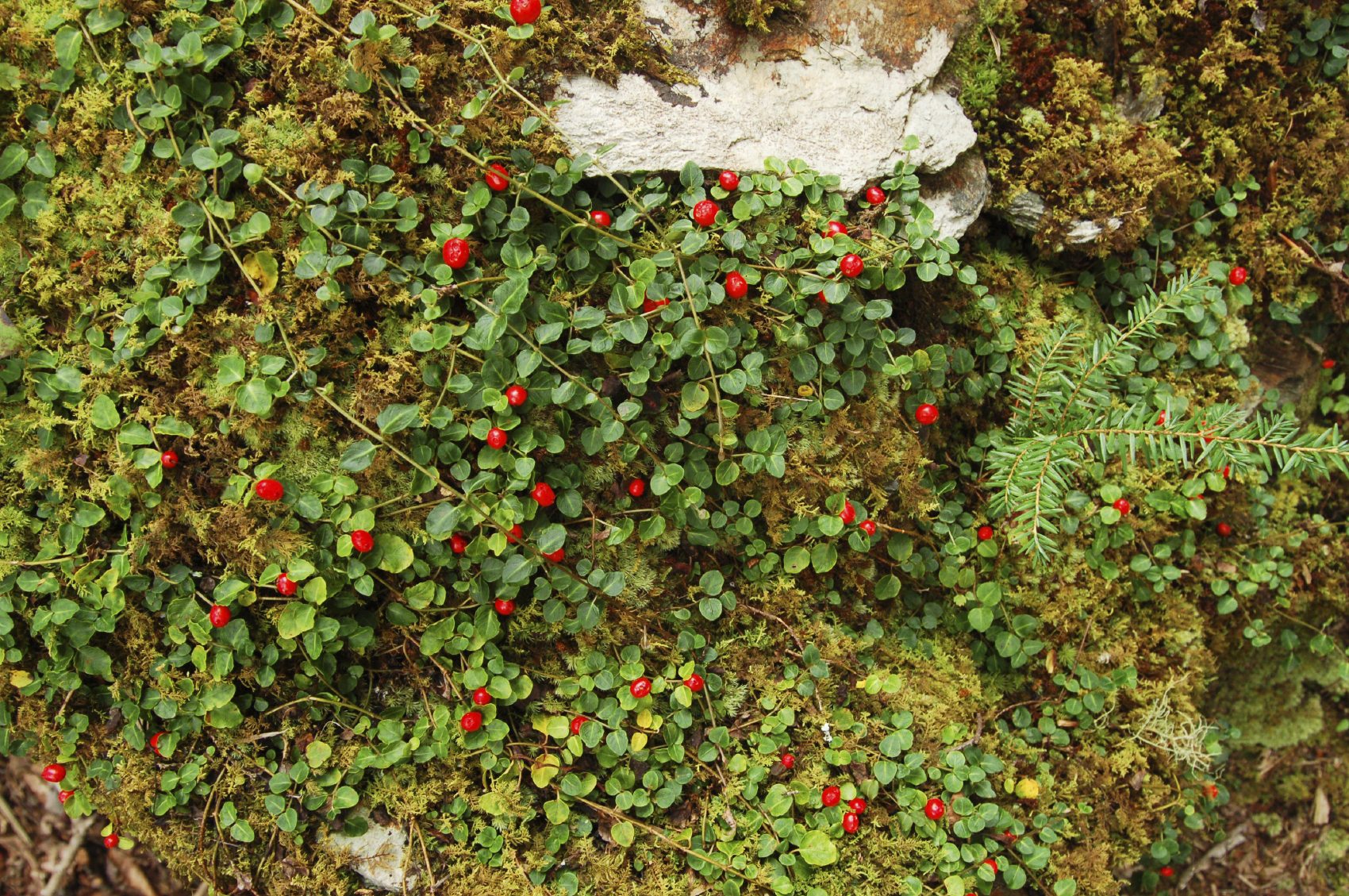Growing Partridgeberries: Using Partridgeberry Ground Cover In Gardens


The partridgeberry (Mitchella repens) is used for ornamental purposes in gardens today, but in the past, uses of partridgeberry included food and medicine. It is an evergreen creeper vine that produces pairs of white flowers, later evolving into bright red berries. Since this plant is a prostrate vine, it’s easy to use it for ground cover. Read on for other partridgeberry facts and uses of partridgeberry in landscapes.
Partridgeberry Facts
Partridgeberry information tells us that the vine is native to North America. It grows in the wild from Newfoundland to Minnesota and south to Florida and Texas. Partridgeberry might have more common names than any other vine, however, so you may know the plant by another name. The vine is also called squaw vine, deerberry, checkerberry, running box, winter clover, one berry, and twinberry. The name partridgeberry came from the belief in Europe that the berries were eaten by partridges. The partridgeberry vine forms large mats in the area they are planted, branching, and putting down roots at the nodes. Each stem can be up to a foot (30.5 cm.) long. The flowers produced by the vine bloom in early summer. They are tubular with four petals, varying in size from 4 to 12 inches (10-30.5 cm.). The flowers grow in groups of two, and when they are fertilized, the ovaries of the twin flowers meld to form one fruit. The red berries remain on the plant all winter long, even for an entire year if left alone. However, they are usually consumed by wild birds like partridge, bobwhites, and wild turkeys. Larger mammals eat them too, including foxes, skunks, and white-footed mice. While they are edible for humans, the berries don’t have much taste.
Growing Partridgeberries
If you decide to start growing partridgeberries, you need to find a site with well-draining soil rich in humus. The vine prefers sandy soil that is neither acidic nor alkaline. Plant the vines in an area with morning sun but afternoon shade. Partridgeberry plants establish slowly but surely, eventually forming partridgeberry ground cover. The plant is rarely attacked by pests or troubled by diseases, which makes caring for partridgeberry plants a snap. Essentially, caring for partridgeberry plant once it’s established only involves removing garden debris from the mat. If you want to propagate partridgeberry, dig up a section of established plants and transfer it to a new area. This works well since the vine typically roots from nodes.
Uses of Partridgeberry
Gardeners love growing partridgeberry in winter gardens. During the cold winter days, partridgeberry ground cover is a delight, with its dark-green foliage and scattered blood-red berries. The birds welcome the berries too.
Sign up for the Gardening Know How newsletter today and receive a free copy of our e-book "How to Grow Delicious Tomatoes".

Teo Spengler is a master gardener and a docent at the San Francisco Botanical Garden, where she hosts public tours. She has studied horticulture and written about nature, trees, plants, and gardening for more than two decades. Her extended family includes some 30 houseplants and hundreds of outdoor plants, including 250 trees, which are her main passion. Spengler currently splits her life between San Francisco and the French Basque Country, though she was raised in Alaska, giving her experience of gardening in a range of climates.